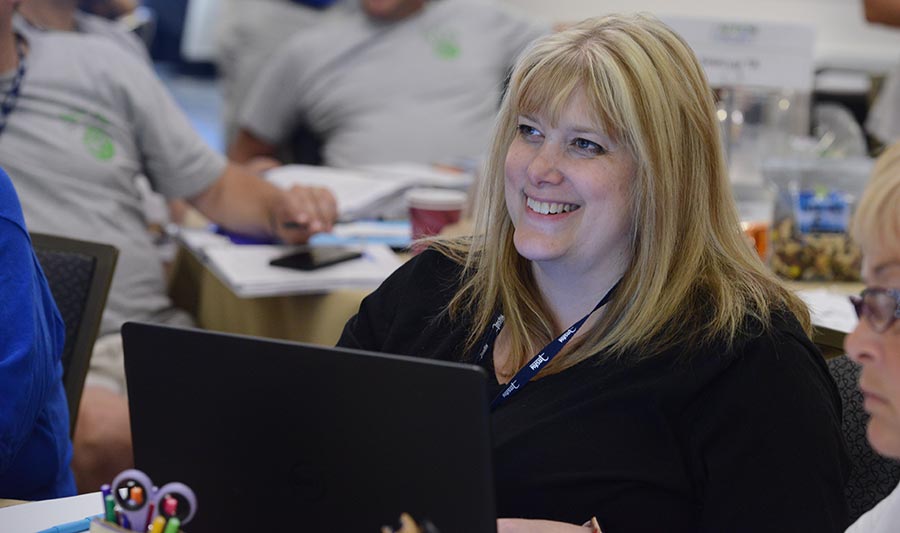Eight-thirty in the morning in the middle of July and there they were — more than 100 teachers and education professionals representing almost 20 local unions— packed inside a large conference room, hard at work.
They came from all over — Long Island, Buffalo, Northern New York and the Southern Tier — using their summertime not to lounge in the sun and do nothing, but to hone their leadership and communication skills as part of NYSUT’s weeklong Local Action Project.
With assistance from NYSUT staff, they spent the week discussing ways to build meaningful partnerships within their communities and improve communications and outreach. They strategized on how to boost member participation within their locals. And they examined how to establish effective structures within their unions that would help enhance their workplaces and districts.

“This is a big commitment … but it’s also a great opportunity,” said Elisabeth Lorentzsen, LAP coordinator for the Lowville Teachers Association in Northern New York. “Just to be able to network is huge. There’s so much value in being able to talk to your colleagues and learn about what worked in their locals, what didn’t, and what they consider to be successful.”
The annual program — full of workshops and networking— requires a three-year commitment from locals and mixes newcomers with those finishing their final year.
“We really want to make sure this a community for learning,” said Patrick Lyons, NYSUT’s director of Constituency Programs and Services. “We want first-year locals to learn from those in their second and third year about what has worked for them, and we want those second- and third-year locals to share their wisdom.”
This summer marked the Lowville TA’s first year at LAP. Lorentzsen, a high school Spanish teacher who also serves as her union’s vice president, said increasing member involvement is what drew her local to the NYSUT program.
“We needed help in learning how to increase participation in our union,” Lorentzsen said. The local recently negotiated a contract and held an information session to discuss the deal. Of 128 members, “just a handful of people showed up. … We’re looking for resources to educate people to be more community minded, and be more active.”

Patti Antanavige. Photo by El-Wise Noisette.
The same needs brought the Mohawk Valley Community College Professional Association to LAP three years ago.
“We’re pretty strong, but having 250 members across two different campuses gets really tricky in terms of making sure everyone is clued in,” said Patti Antanavige, MVCC’s LAP coordinator and the local’s grievance chair. “We wanted to make sure we improved our communications with our members and had a good one-on-one approach. I’m happy to say that three years in, we have mostly achieved that.
“We took the lesson we learned in year-one regarding one-on-one communication and reorganized our entire representative structure to ensure people were talking with others they were comfortable with, instead of just people in close proximity to their buildings. It was a very big change, but it was an important one.”
NYSUT Second Vice President Paul Pecorale said it’s vital — especially now that the U.S. Supreme Court ruled public-sector unions can no longer impose mandatory dues on its members — that locals keep their lines of communication open, increase involvement and “talk about what membership looks like.”
“The people in this room,” Pecorale said of this year’s LAP participants, “understand the commitment to that process and the labor movement.”
Antanavige, a student support adviser, said LAP gave her local “a really good look at how we operated and how we needed to change.
“It’s useful to conduct that sort-of introspective research on yourself,” she said. “LAP also gave us the training we need in learning how to plan strategically. It’s been a great program for us.”
Lorentzsen agreed.
“We were grateful to be at LAP, particularly in a post-Janus world, so that we can actively engage and inspire as many of our members as possible,” she said. “We’ve learned a lot this week and are looking forward to using that knowledge to make our local stronger.”